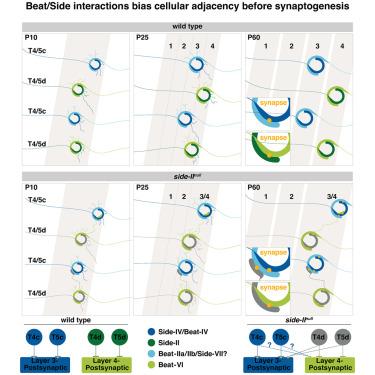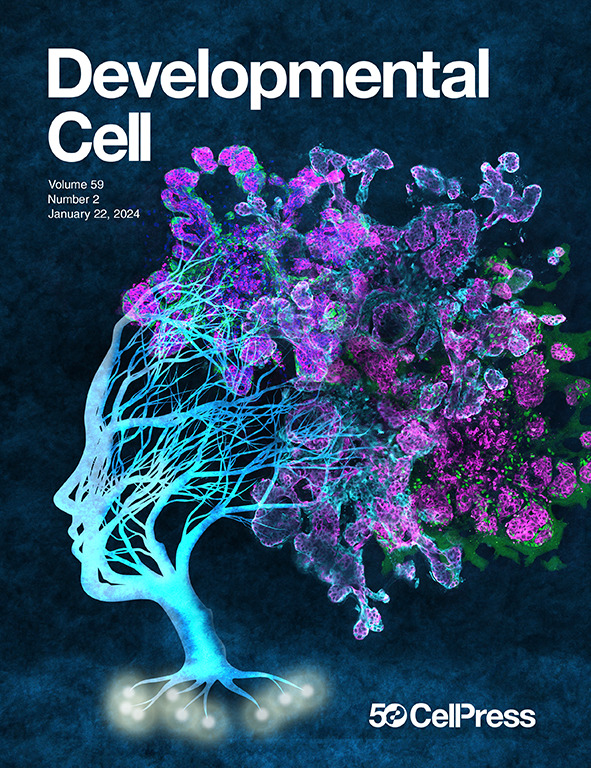Biased cell adhesion organizes the Drosophila visual motion integration circuit
IF 10.7
1区 生物学
Q1 CELL BIOLOGY
引用次数: 0
Abstract
Layer-specific brain computations depend on neurons synapsing with specific partners in distinct laminae. In the Drosophila lobula plate, axons of the four subtypes of T4 and T5 visual motion direction-selective neurons segregate into four layers, where they synapse with distinct subsets of postsynaptic neurons. Here, we identify a layer-specific expression of different receptor-ligand pairs of the Beat and Side families of cell adhesion molecules between T4/T5s and their postsynaptic partners. Developmental genetic analysis demonstrate that Beat/Side-mediated interactions are required to restrict innervation of T4/T5 axons and the dendrites of their partners to a single layer. We show that Beat/Side interactions are not required for synaptogenesis. Instead, they contribute to synaptic specificity by biasing cellular adjacency, causing neurons to segregate in discrete layers, restricting partner availability before synaptogenesis. We propose that the emergence of synaptic specificity relies on a competitive dynamic among postsynaptic partners with shared Beat/Side expression to adhere with T4/T5s.

偏向细胞粘附组织果蝇视觉运动整合回路
特定层的大脑计算依赖于神经元与不同层中特定伙伴的突触。在果蝇小叶板中,四种亚型的 T4 和 T5 视觉运动方向选择性神经元的轴突分离成四层,它们与不同的突触后神经元亚群发生突触。在这里,我们确定了在 T4/T5 与它们的突触后伙伴之间,细胞粘附分子 Beat 和 Side 家族的不同受体配体对的特定层表达。发育遗传分析表明,Beat/Side介导的相互作用是将T4/T5轴突及其伙伴树突的神经支配限制在单层所必需的。我们的研究表明,Beat/Side 相互作用并非突触发生所必需。相反,它们通过偏移细胞邻接性来促进突触特异性,使神经元分离在离散层中,在突触发生前限制伙伴的可用性。我们提出,突触特异性的出现依赖于具有共同 Beat/Side 表达的突触后伙伴之间的竞争动态,以粘附 T4/T5。
本文章由计算机程序翻译,如有差异,请以英文原文为准。
求助全文
约1分钟内获得全文
求助全文
来源期刊

Developmental cell
生物-发育生物学
CiteScore
18.90
自引率
1.70%
发文量
203
审稿时长
3-6 weeks
期刊介绍:
Developmental Cell, established in 2001, is a comprehensive journal that explores a wide range of topics in cell and developmental biology. Our publication encompasses work across various disciplines within biology, with a particular emphasis on investigating the intersections between cell biology, developmental biology, and other related fields. Our primary objective is to present research conducted through a cell biological perspective, addressing the essential mechanisms governing cell function, cellular interactions, and responses to the environment. Moreover, we focus on understanding the collective behavior of cells, culminating in the formation of tissues, organs, and whole organisms, while also investigating the consequences of any malfunctions in these intricate processes.
 求助内容:
求助内容: 应助结果提醒方式:
应助结果提醒方式:


